The Rivalry Earns an Historical Marker
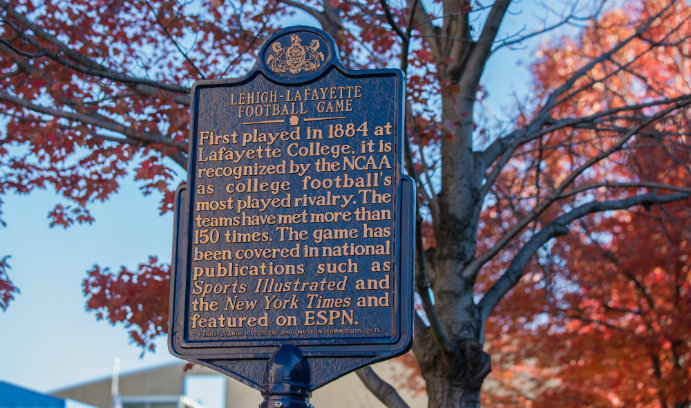
The Rivalry's state historic marker is located on the site of the former Taylor stadium, on the south side of the Rauch Business Center.
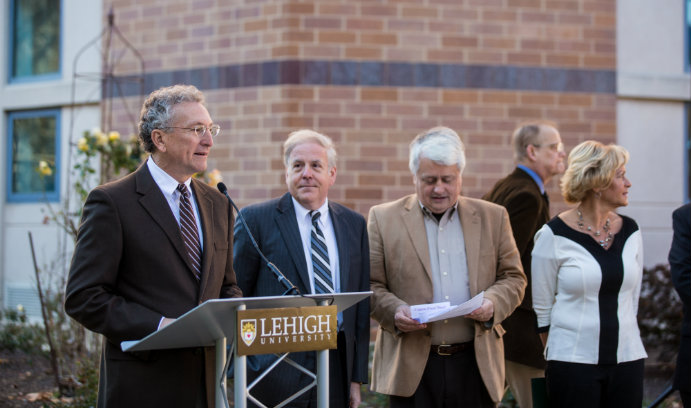
At left, Joe Sterrett, the Murray H. Goodman Dean of Athletics at Lehigh, welcomes guests, noting “the dedication of an historic marker on an historic site the day before an historic game.” Joining him, from left, are state Rep. Bob Freeman, D-Northampton; state Rep. Steve Samuelson, D-Northampton; and state Sen. Lisa Boscola, D-Lehigh/Northampton.
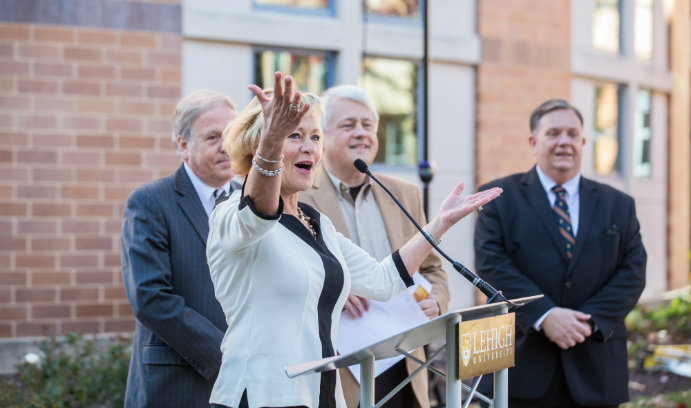
State Sen. Lisa Boscola, D-Lehigh/Northampton, congratulations Lehigh on earning the historical state marker for The Rivalry. At far right is Bill Lewis, a member of the Pennsylvania Historical and Museum Commission and chairman of its history marker selection committee.
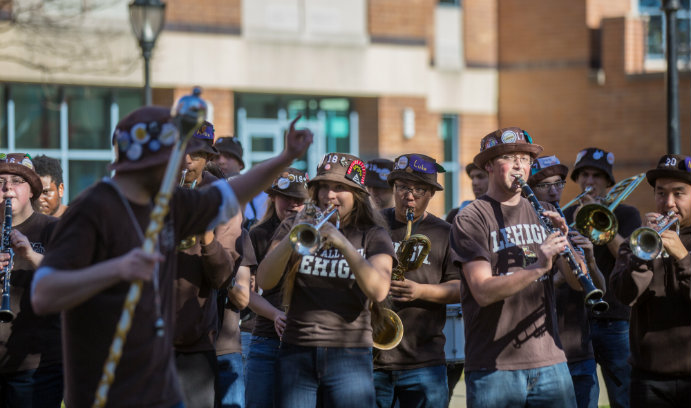
The Marching 97 heralded the unveiling of the marker.
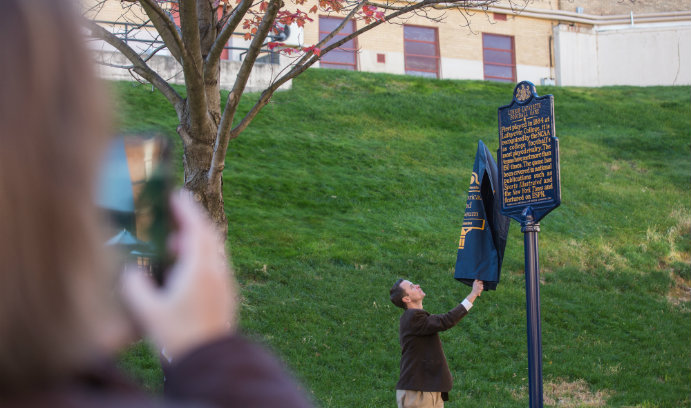
Assistant Athletic Director Rich Haas formally unveils the state historical marker at the site of the former Taylor stadium.
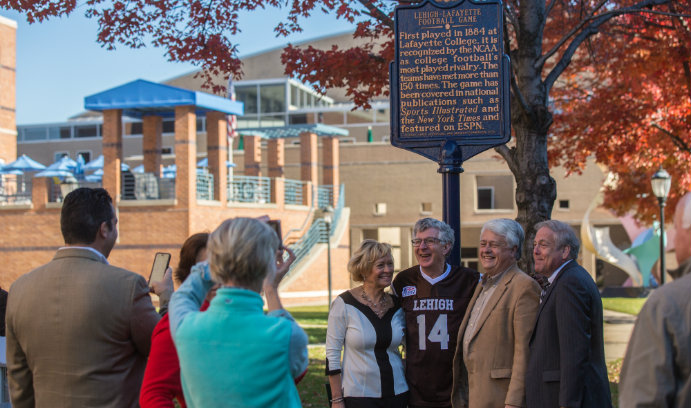
John Simon celebrates the unveiling of the new marker. From left state Sen. Lisa Boscola, D-Lehigh/Northampton; Simon; state Rep. Steve Samuelson, D-Northampton; and state Rep. Bob Freeman, D-Northampton.
An historic state marker now stands as testament to the significance of the Lehigh-Lafayette rivalry—the most-played rivalry in college football.
The blue marker was unveiled with much fanfare Friday at the site of the former Taylor Stadium, where the Mountain Hawks played from 1914 to 1988 before moving to Goodman Stadium.
The Marching 97 heralded the dedication, joined by President John Simon, state lawmakers Lisa Boscola, D-Lehigh/Northampton; Bob Freeman, D-Northampton; and Steve Samuelson, D-Northampton; and other dignitaries, on the south side of the Rauch Business Center.
In welcoming guests, Joe Sterrett, the Murray H. Goodman Dean of Athletics at Lehigh, noted “the dedication of an historic marker on an historic site the day before an historic game.”
The Mountain Hawks and Leopards met for the 152nd time on Saturday, Nov. 19. Lehigh won, 45-21.
Bill Lewis, a member of the Pennsylvania Historical and Museum Commission and chairman of its history marker selection committee, told those gathered for the dedication that the state’s historical markers are not easy to secure. Out of the 100 or so nominations that are made each year, he said, only about a dozen are selected.
“What are marked are things that have statewide, national and international significance,” Lewis said. “And what is more iconic to the history of our Commonwealth than a rivalry between two of our finest institutions of higher learning?”
John Pettegrew, associate professor of history at Lehigh, talked about the significance of the school spirit that The Rivalry stirs up. “That joining in of the student body and really them being a part of The Rivalry and the game is just tantamount to The Rivalry itself,” he said.
“Yes, we need to have the game played, but I think far more important than…who wins or loses, it is the surrounding traditions, the pomp and circumstance, the music, the energy, the school spirit that really solidifies a rivalry such as Lehigh-Layfayette.
“There’s a democratic quality to it,” he said. “All students belong, and the players are their representatives.”
Photos by Christa Neu
Posted on:

